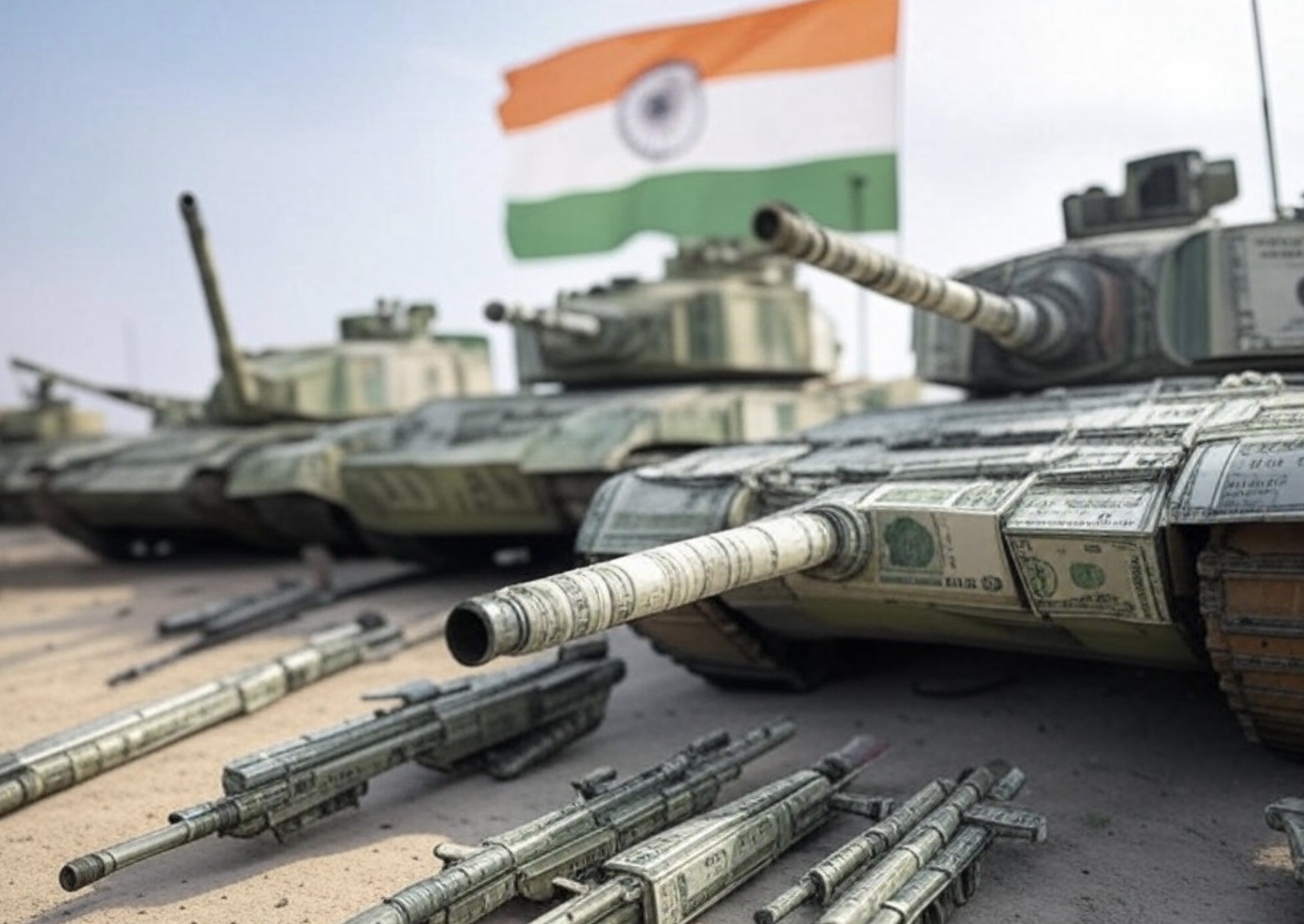The Government of India has increased the capital outlay on defence services to Rs 1.8 lakh crore, up from the Budget Estimates (BE) of Rs 1.72 lakh crore in the previous fiscal year. This rise represents a 4.65 percent increase in the capital budget when comparing the BE-to-BE figures from the previous financial year. By allocating additional funds, the government aims to enhance the nation’s military capabilities and support strategic defence initiatives.
Highlights :
The total defense allocation for 2025-26 stands at ₹681,210.27 crore, comprising ₹311,731 crore for revenue expenditure, ₹180,000 crore for capital expenditure, ₹160,795 crore for pensions, and ₹28,682 crore for civil expenses. Compared to the previous budget estimates, the capital allocation has increased by 4.65%, revenue expenditure by 9.29%, pensions by 13.87%, and Ministry of Defence (MoD) civil expenses by 10.47%.

Overall Defence Budget Figures
The total defence budget for the current fiscal year stands at Rs 6.8 lakh crore, which accounts for approximately 1.91 percent of the projected Gross Domestic Product (GDP). The GDP represents the total market value of all goods and services produced within a country in a specific period. The government has allocated a significant portion of the budget to capital expenditures, which include building military infrastructure, purchasing advanced weaponry, and modernizing defence systems to maintain national security.

Sharp Increase in Defence Pensions
Defence pensions have experienced a substantial increase, making it one of the most notable aspects of the budget. The government has allocated a larger sum to ensure that retired defence personnel receive their rightful benefits. This move demonstrates a strong commitment to supporting those who have served in the armed forces and fulfilling pension liabilities. Pension liabilities refer to the financial obligations that the government must meet to pay retirees their due pensions, ensuring long-term security for veterans and their families.
Challenges in Capital Expenditure Utilization
Although the government has increased the capital budget, a major challenge remains: the underutilization of allocated funds. In FY 24, the revised capital budget was reduced to Rs 1.59 lakh crore from the initially allocated Rs 1.72 lakh crore. This revision indicates that the armed forces were unable to fully utilize their allotted capital expenditure. As a result, Rs 13,000 crore in unspent funds will be returned. This scenario highlights potential inefficiencies in the procurement process and project execution.
Capital expenditure refers to funds used to acquire, upgrade, and maintain physical assets such as military bases, equipment, and technology. If a portion of the capital budget remains unspent, it may signal delays in acquisitions or challenges in executing planned defence projects effectively.
Implications and Future Outlook
The underutilization of capital funds raises serious concerns about procurement bottlenecks, delays in project execution, and inefficiencies in defence acquisitions. Ensuring the optimal use of allocated resources will be critical in advancing India’s defence modernization plans. Moving forward, policy interventions and a streamlined procurement process may be necessary to improve efficiency and ensure that allocated funds are spent effectively.
Additionally, as India continues to focus on self-reliance in defence manufacturing through initiatives like Atmanirbhar Bharat, prudent financial management and timely utilization of funds will play a vital role in strengthening the country’s military preparedness. Efficient fund deployment, transparent procurement procedures, and proactive planning will be essential to ensuring that the defence budget is utilized to its full potential, ultimately enhancing national security and strategic readiness.

why defence is neglected? how a out acquiring new fighters and ongoing AMCA program
₹13000 Cr returned, which could be used in Kaveri 90KN engine,
or DRDO Flight/ Engine test plane + facility,
or New Tejas line.